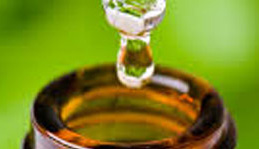Essential oils can be primary ingredients in perfumes for cosmetics, soaps, and detergents. They form the basis of the spices in our foods. So then why the interest in extracting essential oils with supercritical CO2
Because the use of essential oils continues to be "essential" for modern living.
The more we learn about the positive effect essential oils can have on our health and wellbeing, the more we worry about how those essential oils are produced.
No Solvent residue. No health hazards. Maintains a "natural" state.
As with natural products, SCF CO2 extracts the essential oils more efficiently than petroleum-based solvents, but, maybe more important upon returning to an ambient state, the CO2 becomes a gas, leaving no residue. The flavor or fragrance is in its unadulterated state. There is no solvent taste or smell.
Mild Extraction Conditions – 31°C temperature
With temperatures less than body temperature (37°C), little thermal degradation of sensitive compounds occurs. Steam distillation is used in many current procedures, but with this exposure to temperatures over 100°C destroy, many of the “top notes” are destroyed or are swept away, severely reducing their yield.
Fractionation - easy using only CO2 - CO2 is a "tunable solvent"
Load the feedstock into an extraction vessel only once and then by only changing the pressure of the SCF CO2, you can make it have the solubility characteristics of a myriad of different petroleum-based solvents. You don’t need to add or change solvents.
Sometimes SCF CO2 can be used in conjunction with more traditional methods such as soaking perfume feedstocks in an organic solvent for a period of time. The organic solvents containing the extracted perfumes (essential oils) and accompanying waxes is then decanted and evaporated, leaving a concrete. The essential oils can easily be separated from the wax with SCF CO2. Because of the low temperature, the process gives high recoveries.
